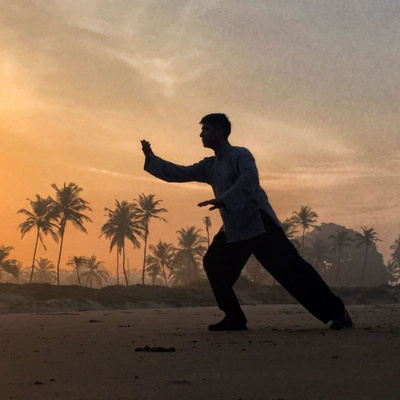
Feature: The Treasure That is Tai Chi
People the world over are turning to Tai Chi, an ancient Chinese martial art form, because of its immense health benefits.
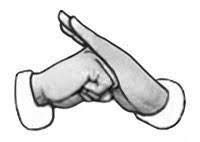
Let me confess at the very outset: I had always considered Tai Chi to be an exercise for those who had crossed the silver threshold. As I hovered around that very threshold, I joined a class and discovered to my surprise that it consisted mostly of those youngin body, muscle and flexibility. Two classes down, and I was hooked.
Let’s delve a little into the history of this beautiful, ancient Chinese martial art. It is definitely a martial art but considered both hard as well as soft, and is now practised the world over for its health benefits. Given that Tai Chi forms are performed almost as if in slow motion, there is absolutely no danger of any exercise-related injury.
This is no violent martial art. The philosophy behind Tai Chi is that when you meet force with force, injuries are inevitable. So, students are taught to meet the coming force with a certain softness which retains an unyielding strength at its core. The incoming force will either expend itself or will be directed away by the Tai Chi practitioner. Thus, the yin and the yang of combat are shown with direct simplicity.
This meld of supreme/ultimate is basically a combine of yin and yang, the active and the receptive forces. The fist referred to is also force. It is also about a martial art that summons inner power rather than relying only on external physical power. The sequence of forms is derived from the natural movement of birds and animals.
All the forms are performed keeping the spine straight, letting the body move in a natural manner and employing the correct abdominal breathing techniques. In Chinese philosophy and medicine, there exists the concept of ‘chi,’ a vital force that animates the body.
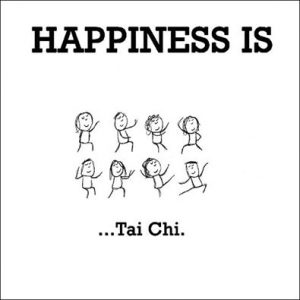
One of the avowed aims of Tai Chi is to foster the circulation of this ‘chi’ within the body, the belief being that by doing so, the health and vitality of the person are enhanced. Every Tai Chi form is done bringing the full power of the mind into focus.
Needless to say, it immediately calms the mind. The head has to be cleared of all detritus of life and living, and then filled with the consideration of the forms the body is about to undertake. Slow, repetitive, meditative, low impact… this is how Tai Chi begins.
After months, even years, of training, it morphs into realistic, active, fast, high impact. It is more about defence than attack, more about neutralising than attacking. Increasingly in the West, clinics and Senior Citizen Centres have incorporated Tai Chi classes for its health benefits.
The fact that it is a low-stress form of exercise is one of its biggest appeals. It promotes cardiovascular health and digestion, keeps the joints limber and reduces the risk of falls in the elderly. It has been known to help people with osteoarthritis, as well as reduce the severity of diabetes. Overall, the physical and mental well-being it induces is the biggest benefit.
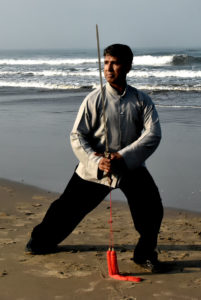
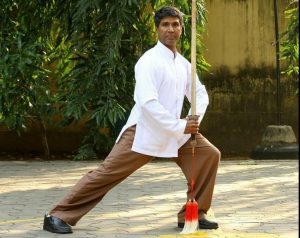
Sifu George Thomas, the Head of the Authentic Yang Family Tai Chi in India, authorised by the Grand Master and the World Yong Nian Tai Chi Federation, has this to say: Tai Chi is popularly described as a Moving Meditation because the movements are slow,evenly paced and like a flowing river. Some call it Chinese Yoga because it is a combination of physical exercise, breathing technique and meditation.
The benefits of Tai Chi are boundless. It strengthens the energy of the body andprevents negative elements from penetrating the system. It raises awareness levels, controls temper and improves concentration and stamina. For people who are already fit, it helps maintain fitness levels. It also helps strengthen the joints, ligaments and tendons, stretch the nerves and tone up the muscles.
Regular Tai Chi practice improves blood circulation and better circulationof chi (praana or life force); it opens up blocked areas and the naadis(energy channels) in the body. It helps in better functioning of the central nervous system, cardio-vascular system, respiratory system and metabolism. What’s more, it is safe for pregnant women, heart patients, people suffering from arthritis and those who cannot perform strenuous exercise.
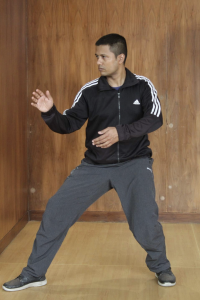
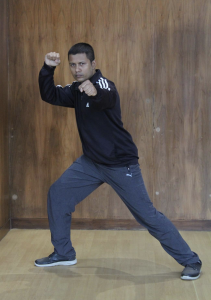
Kaustav Guha, a tai Chi instructor in Bangalore, throws more light on the subject. Says Guha, “Tai Chi is the perfect cardio-workout without shock-effects on the ankle, joints, back; people above 50 are particularly sensitive to these shocks.”“Tai Chi consists of slow and graceful movements that, with diligent practice, strengthens the thigh muscle, bones, tendons and sinews so that the legs can absorb shock more effectively. Tai Chi exercises ensure that blood circulation to and from the liver, spleen, kidneys is improved and overall physical health improved.”
“The entire Tai Chi long-form routine takes 21 minutes, about the same time it takes for the blood circulation to complete a single cycle. Hence, the Tai Chi routine addresses the complete blood circulation of the body in its exercise, emphasising individual parts of the body as the exercise progresses.”
Guha concludes, “Women who are over 50 are particularly vulnerable to osteoporosis and unless the bones get the required exercise, they actually start wasting. Tai Chi is the perfect exercise for them.”
Veena Bopanna, a housewife who has been practicing Tai Chi for over a decade now, sees it as ‘a wonderful alternative to other mediums of exercise,’ and is clear about Tai Chi’s health benefits. “This art brings about a state of equilibrium if practised regularly,” says Veena.
Kesang Kansakar, a marketing consultant who has been practicing Tai Chi for many years, says, “It started off as self-prescribed therapy for an aching back, but now Taichi has given me more than just a sturdy spine. As a regular practitioner, I have observed not just improved balance or posture, it has tamed the mind to a certain degree,too. I feel I have a better control over my thoughts and emotions, and am more grounded in the way I react to situations. Taichi is meditation for some, medication for some — for me, it is a journey that helps explore my limitations and weaknesses, work on them and make improvements every day.“
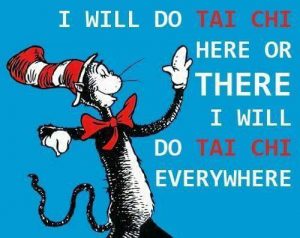
- Tai Chi is all about suppleness and elasticity: bending back like a weed to spring upright again.
- Centredness: careful attention to each and every movement.
- Alignment: steadiness of the legs, flexibility of the torso. Smooth movements, internal stillness.
- Tai Chi is best done in the open, never on a full stomach, at dawn but not before daybreak, and between 11 p.m. to midnight, not later than that, either.
- So there you have it: Tai Chi will strengthen the body, making it easy to deflect attack. It will calm the mind and make it more reflective. It will help the body acquire flexibility. Just go do it.
- All you require is the commitment, loose clothing and flat, comfortable shoes. Oh, and a good teacher, of course.
An earlier version of this article ran in THE HINDU of 22 July 2010.